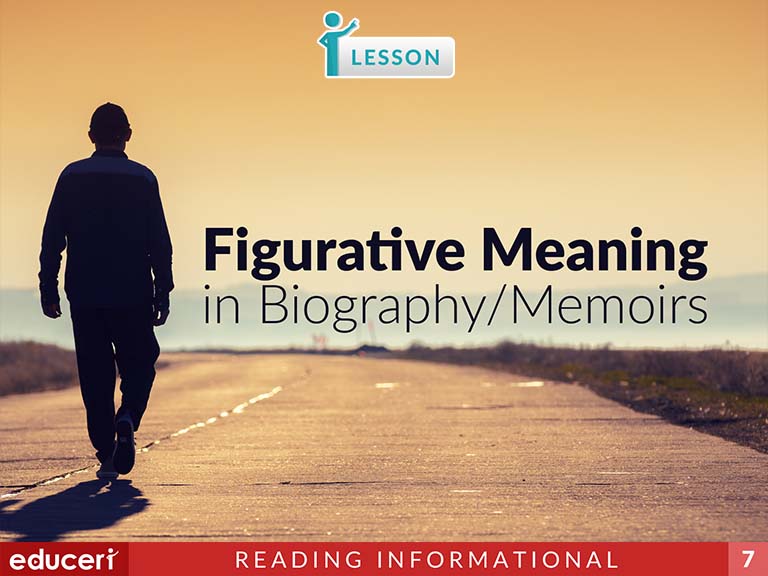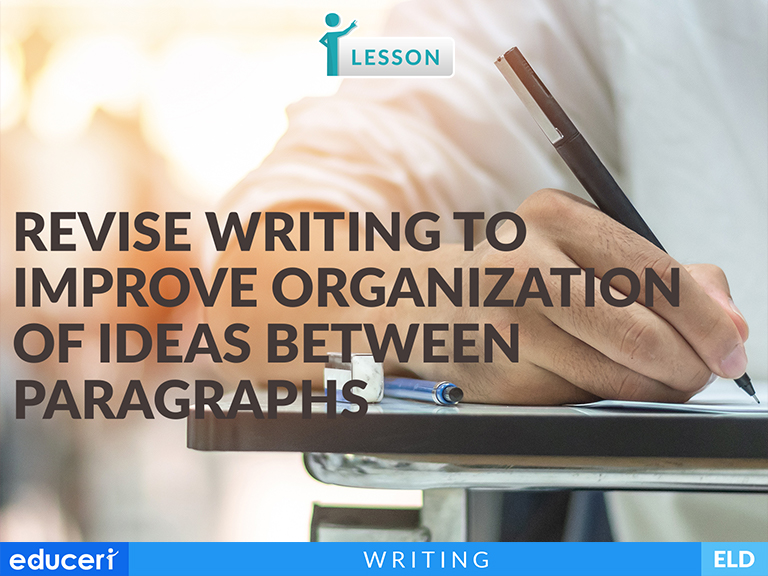All Lessons

Identify the Author's Point of View
This reading comprehension lesson focuses on identifying an authors point of view. The lesson includes research-based strategies and strategic questions that prepare students for assessments. In this lesson, students read the passage to determine the author's point of view. Then, they go back to the text to identify supporting details that help develop the author's point of view. In addition to the lesson, there are four pages of Independent Practice and review with questions modeled after current adaptive testing items.
Share This Lesson

Note Instances of Bias and Stereotyping
This reading comprehension lesson focuses on noting instances of bias and stereotype. The lesson includes research-based strategies and strategic questions that prepare students for assessments. In this lesson, students read a passage to identify the author's assertion. Then, they answer questions about examples of bias or stereotyping found within the text. In addition to the lesson, there are four pages of Independent Practice and review with questions modeled after current adaptive testing items.
Share This Lesson

Analyze Cause-and-Effect Text
This reading comprehension lesson focuses on analyzing text that uses the cause-and-effect organizational pattern. The lesson includes research-based strategies and strategic questions that prepare students for assessments. In this lesson, students read the text and identify signal words that indicate cause-and-effect relationships. Then they determine the cause and the effect. Finally, they identify the pattern -- single cause with single effect or multiple effects, or multiple causes with a single effect. In addition to the lesson, there are seven pages of Independent Practice and review with questions modeled after current adaptive testing items.
Share This Lesson
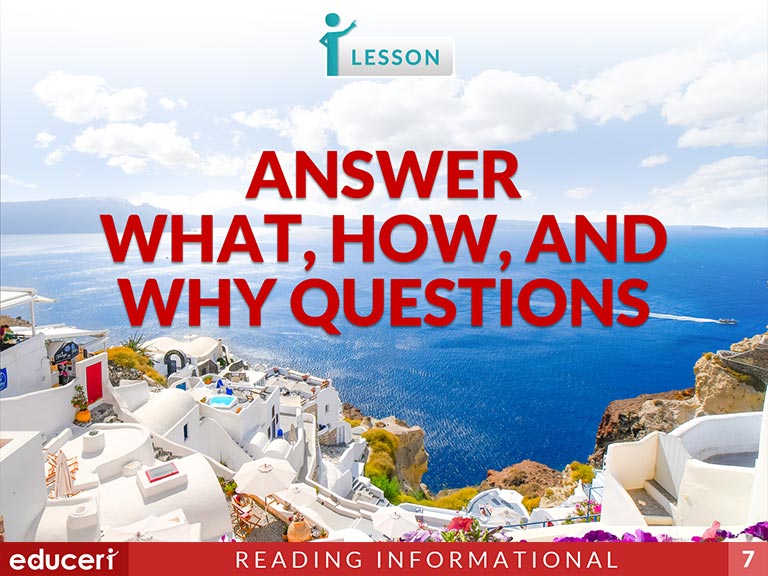
Answer What and How Questions
This lesson is a part of the Link to Literacy Program.
Share This Lesson
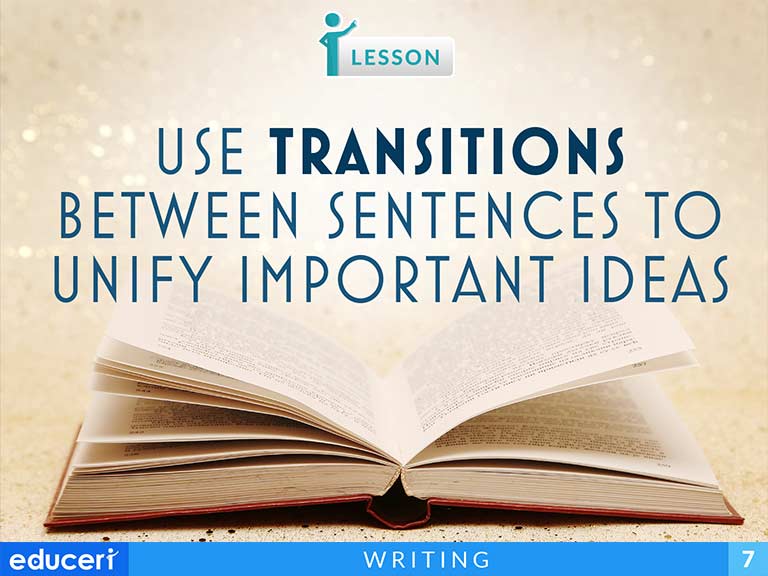
Use Transitions between Sentences to Unify Important Ideas
W.7.2 Write informative/explanatory texts to examine a topic and convey ideas, concepts, and information through the selection, organization, and analysis of relevant content.
W.7.2.CW.7.2.C Use appropriate transitions to create cohesion and clarify the relationships among ideas and concepts.
This writing strategies lesson focuses on using transitions between sentences to unify important ideas. The lesson includes research-based strategies and strategic questions that prepare students for assessments. In this lesson, students read a paragraph and identify comparing and contrasting, cause and effect, add or sequence ideas within the sentence or paragraph. Using the transition table (word bank), students select the appropriate transition to place between sentences. In addition to the lesson, there are four pages of Independent Practice and review with questions modeled after current adaptive testing items.
Share This Lesson

Use Outlining to Analyze a Composition
This writing strategies lesson focuses on clarifying text by creating outlines. The lesson includes research-based strategies and strategic questions that prepare students for assessments. In this lesson, students read a passage and fill out a corresponding outline. They identify the missing main topic, subtopics, and details and fill them into the correct places on the outline. Eventually, the student will fill in an entire empty outline. In addition to the lesson, there are four pages of Independent Practice and review with questions modeled after current adaptive testing items.
Share This Lesson

Revise Writing to Improve Word Choice
This writing strategies lesson focuses on revising writing to improve word choice. The lesson includes research-based strategies and strategic questions that prepare students for assessments. In this lesson, students read the question and paragraph, looking for the words to be revised. Then, students replace the word with a more precise word from the word bank and re-read the sentence in the paragraph with the new, more precise word. In addition to the lesson, there are four pages of Independent Practice and review with questions modeled after current adaptive testing items.
Share This Lesson

Plan and Write a Narrative with Dialogue and in First Person
This writing strategies lesson focuses on writing a multi-paragraph narrative composition. The lesson includes research-based strategies and strategic questions that prepare students for assessments. In this lesson, students create a graphic organizer that describes the introduction, the body, and the conclusion of their composition based on a given prompt. Then, they use the organizer to write a four-paragraph composition. In addition to the lesson, there are eleven pages of Independent Practice and review with prompts and organizers provided.
Share This Lesson

Revise Writing
This writing lesson covers how to revise writing by adding or deleting sentences based on how they support the main idea. The lesson includes research-based strategies and strategic questions that prepare students for assessments. In this lesson, students will learn how to change written text to improve it by determining which details support the main idea and which don’t.
Share This Lesson

Plan an Opinion Piece
This writing lesson covers how to plan an opinion piece. The lesson includes research-based strategies and strategic questions that prepare students for assessments. In this lesson, students read the topic and decide their position about it. Then they identify three appeals for their position, focusing on logical, emotional, and ethical. They also restate their position for a summary. In addition to the lesson, there are four pages of new topics for review.
Share This Lesson

Write an Opinion Piece
W.7.1 Write arguments to support claims with clear reasons and relevant evidence.
W.7.1.AW.7.1.A Introduce claim(s), acknowledge alternate or opposing claims, and organize the reasons and evidence logically.
W.7.1.BW.7.1.B Support claim(s) with logical reasoning and relevant evidence, using accurate, credible sources and demonstrating an understanding of the topic or text.
W.7.1.CW.7.1.C Use words, phrases, and clauses to create cohesion and clarify the relationships among claim(s), reasons, and evidence.
W.7.1.DW.7.1.D Establish and maintain a formal style.
W.7.1.EW.7.1.E Provide a concluding statement or section that follows from and supports the argument presented.
This writing lesson covers how to write an opinion piece. The lesson includes research-based strategies and strategic questions that prepare students for assessments. In this lesson, students write an introduction that introduces the topic and states their position. Then, they write paragraphs that use logical, emotional, or ethical appeals to the audience. Finally, they write a summary paragraph that restates their position. These sentences are based on the planning charts created in the Plan an Opinion Piece lesson. In addition to the lesson, there are four pages of new topics for review.
Share This Lesson
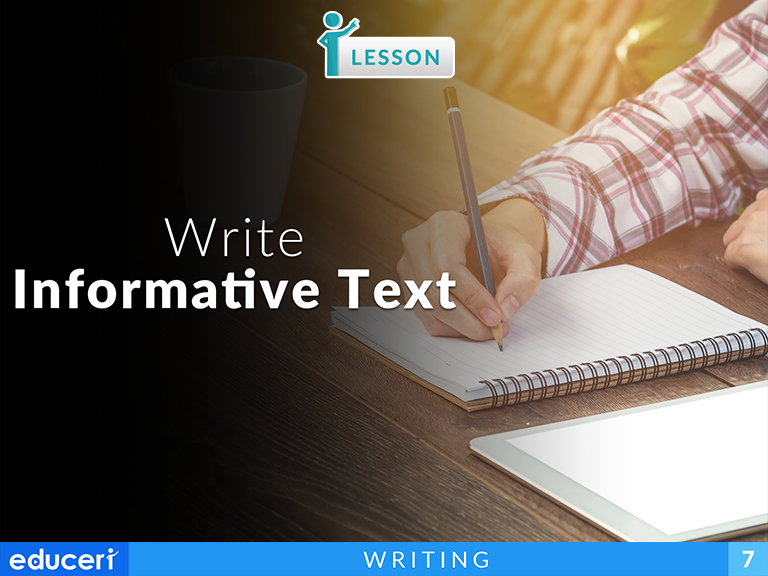
Write Informative Text
This writing lesson covers how to write informative text. The lesson includes research-based strategies and strategic questions that prepare students for assessments. In this lesson, students write at least one complete sentence for each section of the planning chart completed in the Plan Informative Text lesson. Then, they use an editing checklist to identify and correct any errors. In addition to the lesson, there are four pages of topics for review and extended thinking.
Share This Lesson

Determine the Meaning of Words Using Context Clues
L.7.4 Determine or clarify the meaning of unknown and multiple-meaning words and phrases based on grade 7 reading and content, choosing flexibly from a range of strategies.
L.7.4.AL.7.4.A Use context (e.g., the overall meaning of a sentence or paragraph; a word's position or function in a sentence) as a clue to the meaning of a word or phrase.
This language lesson covers the use of context clues to determine the meaning of unknown words. The lesson includes research-based strategies and strategic questions that prepare students for assessments. In this lesson, students will read a paragraph, identify context clues that help explain the meaning of bolded words, and then reread the sentence replacing the word with its meaning.
Share This Lesson
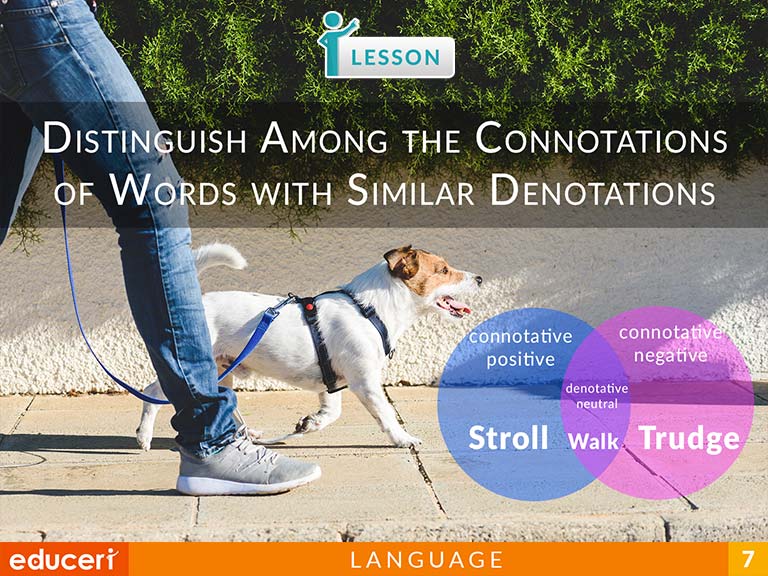
Distinguish Among the Connotations of Words with Similar Denotations
This language lesson covers how to distinguish between connotations of words with similar denotations. The lesson includes research-based strategies and strategic questions that prepare students for assessments. In this lesson, students will analyze sentences for context clues that suggest which of three similar words can be used in the sentence based on each word’s denotation and connotation.


